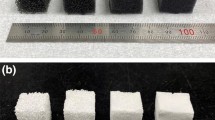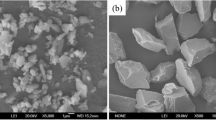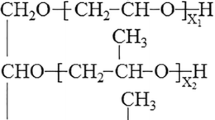Abstract
Recently, porous ceramics have received much interest in various applications, finding use in membranes, thermal insulation, catalytic substrates, and gas burner media owing to their outstanding thermal stability and chemical stability. To fabricate porous ceramics, many processing methods can be used. Particularly, reticulated porous ceramics prepared by the replica method are worthy of attention given their interconnected open pores with high porosity and a low pressure drop. Therefore, many researchers have studied reticulated porous ceramics using various raw materials, such as alumina, mullite, silicon carbide, cordierite and partially stabilized zirconia. However, there are few reports about reticulated porous ceramic based on kaolin, which is a low-cost raw material that can be sintered at low temperature. In this study, reticulated porous kaolin is fabricated via the replica method. To tailor the mechanical properties of the reticulated porous kaolin, the pore density of polyurethane foam (10–80 PPI (Pores Per Inch)) and the sintering temperature (1000–1300 ℃) of the kaolin slurry-coated polyurethane foams are controlled. To characterize the kaolin, scanning electron microscopy (SEM), mercury porosimetry, high-resolution micro-computed tomography (µCT), and a universal testing machine were used. When the reticulated porous kaolin with a pore density of 60 PPI was sintered at 1300 ℃, it showed compressive strength of 1.23 MPa.







Similar content being viewed by others
Change history
16 September 2020
During the copyediting process, the author given and family names have been swapped. They should be read as follows.
References
A.R. Studart et al., Processing routes to macroporous ceramics: a review. J. Am. Ceram. Soc. 89(6), 1771–1789 (2006)
U.T. Gonzenbach et al., Processing of particle-stabilized wet foams into porous ceramics. J. Am. Ceram. Soc. 90(11), 3407–3414 (2007)
Z.-Y. Deng et al., Microstructure and thermal conductivity of porous ZrO2 ceramics. Acta Mater. 55(11), 3663–3669 (2007)
T. Fey et al., Reticulated replica ceramic foams: processing, functionalization, and characterization. Adv. Eng. Mater. 19(10), 1700369 (2017)
U. Betke et al., Manufacturing of reticulated open-cellular aluminum nitride ceramic foams from aqueous AlN suspensions. Adv. Eng. Mater. 19(3), 1600660 (2017)
U. Soy, A. Demir, F. Caliskan, Effect of bentonite addition on fabrication of reticulated porous SiC ceramics for liquid metal infiltration. Ceram. Int. 37(1), 15–19 (2011)
U.F. Vogt et al., Improving the properties of ceramic foams by a vacuum infiltration process. J. Eur. Ceram. Soc. 30(15), 3005–3011 (2010)
J.-H. Ha et al., Development of a carbon-coated reticulated porous alumina material with tailored structural properties for potential radar-absorption applications. Ceram. Int. 43(18), 16924–16930 (2017)
X. Zhu, D. Jiang, S. Tan, Preparation of silicon carbide reticulated porous ceramics. Mater. Sci. Eng., A 323(1–2), 232–238 (2002)
I.-K. Jun et al., Improved compressive strength of reticulated porous zirconia using carbon coated polymeric sponge as novel template. Mater. Lett. 60(20), 2507–2510 (2006)
H.H. Murray, Traditional and new applications for kaolin, smectite, and palygorskite: a general overview. Appl. Clay Sci. 17(5–6), 207–221 (2000)
C. Voigt, C.G. Aneziris, J. Hubálková, Rheological characterization of slurries for the preparation of alumina foams via replica technique. J. Am. Ceram. Soc. 98(5), 1460–1463 (2015)
X. Yao et al., Effect of recoating slurry viscosity on the properties of reticulated porous silicon carbide ceramics. Ceram. Int. 32(2), 137–142 (2006)
H. Yue, X. Wang, J. Tian, Fabrication of Si3N4 reticulated porous ceramics reinforced by needle-like β-Si3N4. Ceram. Int. 40(6), 8525–8532 (2014)
X. Pu et al., Novel method to optimize the structure of reticulated porous ceramics. J. Am. Ceram. Soc. 87(7), 1392–1394 (2004)
Y.-F. Chen, M.-C. Wang, M.-H. Hon, Phase transformation and growth of mullite in kaolin ceramics. J. Eur. Ceram. Soc. 24(8), 2389–2397 (2004)
Z. Hou et al., Effect of the different additives on the fabrication of porous kaolin-based mullite ceramics. Ceram. Int. 42(15), 17254–17258 (2016)
J. Banjuraizah, H. Mohamad, Z.A. Ahmad, Crystal structure of single phase and low sintering temperature of α-cordierite synthesized from talc and kaolin. J. Alloy. Compd. 482(1–2), 429–436 (2009)
S. Rannabauer et al., Increased mechanical stability and thermal conductivity of alumina reticulated porous ceramics (RPC) by nanoparticle infiltration processing. Adv. Eng. Mater. 19(10), 1700211 (2017)
X. Liang et al., Fabrication of SiC reticulated porous ceramics with multi-layered struts for porous media combustion. Ceram. Int. 42(11), 13091–13097 (2016)
R. Chen et al., A novel design of Al2O3–ZrO2 reticulated porous ceramics with hierarchical pore structures and excellent properties. J. Eur. Ceram. Soc. 39(5), 1877–1886 (2019)
S. Akpinar, I.A. Altun, K. Onel, Effects of SiC addition on the structure and properties of reticulated porous mullite ceramics. J. Eur. Ceram. Soc. 30(13), 2727–2734 (2010)
Acknowledgements
This study was supported financially by Fundamental Research Program of the Korean Institute of Materials Science (KIMS), Grant No. PNK6780, and by the Technology Innovation Program (20003782) of the Ministry of Trade, Industry and Energy.
Author information
Authors and Affiliations
Corresponding author
Additional information
Publisher's Note
Springer Nature remains neutral with regard to jurisdictional claims in published maps and institutional affiliations.
Rights and permissions
About this article
Cite this article
Lee, S., Ha, JH., Lee, J. et al. Enhanced mechanical strength of talc-containing porous kaolin prepared by a replica method. J. Korean Ceram. Soc. 58, 123–133 (2021). https://doi.org/10.1007/s43207-020-00073-6
Received:
Revised:
Accepted:
Published:
Issue Date:
DOI: https://doi.org/10.1007/s43207-020-00073-6




